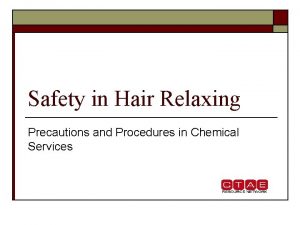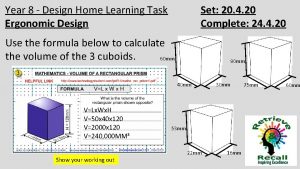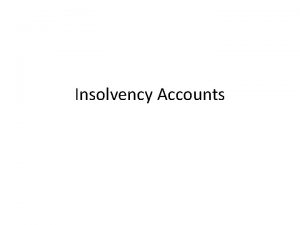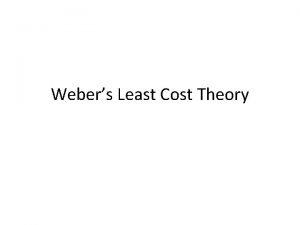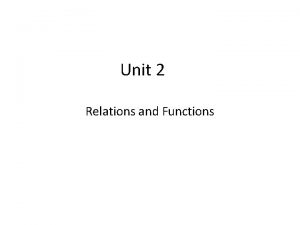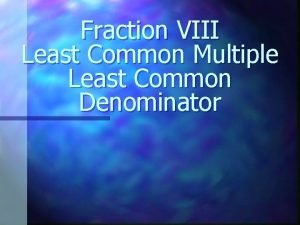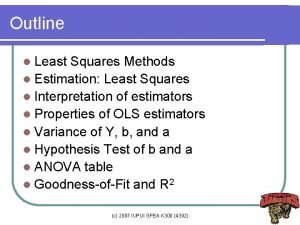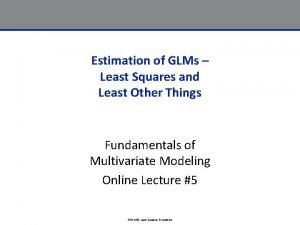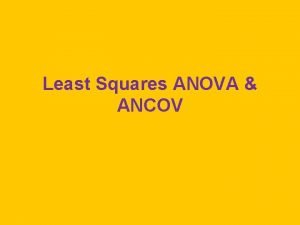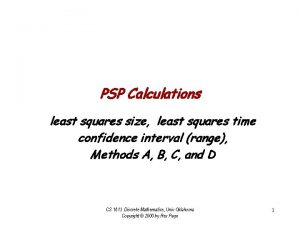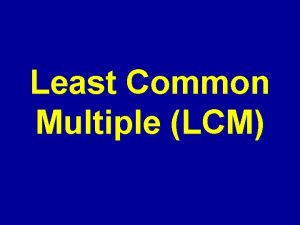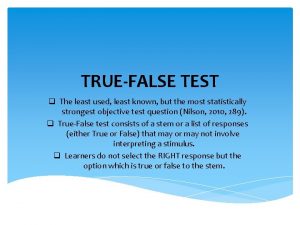Do Now Make a list of at least





















- Slides: 21

Do Now • Make a list of at least 4 items you use every day that you think are made from minerals.

What are minerals, how do they form and what are their uses?

Minerals • A naturally occurring, inorganic solid that has a characteristic chemical composition, an orderly internal crystal structure and a characteristic set of physical properties.

Minerals • A naturally occurring, inorganic solid that has a characteristic chemical composition, an orderly internal crystal structure and a characteristic set of physical properties. • Can be a single element or a compound.

Minerals • A naturally occurring, inorganic solid that has a characteristic chemical composition, an orderly internal crystal structure and a characteristic set of physical properties. • Can be a single element or a compound. • Native Elements: gold, silver, copper • Compounds: Silica (Si. O 2)

Ore Minerals • Valuable and economical to extract.

Ore Minerals • Valuable and economical to extract. • Metallic

Ore Minerals • Valuable and economical to extract. • Metallic • Conduct electricity • Luster • Opaque

Ore Minerals • Valuable and economical to extract. • Metallic • Conduct electricity • Luster • Opaque • Nonmetallic

Ore Minerals • Valuable and economical to extract. • Metallic • Conduct electricity • Luster • Opaque • Nonmetallic • Good insulators • May have luster or be opaque, but not necessary

Selected Elements and Their Ore Minerals • • • • Element Aluminum (Al) Beryllium (Be) Chromium (Cr) Copper (Cu) Iron (Fe) Lead (Pb) Manganese (Mn) Mercury (Hg) Molybdenum (Mo) Nickel (Ni) Silver (Ag) Tin (Sn) Titanium (Ti) Uranium (U) Zinc (Zn) Important ore minerals gibbsite, boehmite, diaspore (bauxite) beryl chromite bornite, cuprite, chalcocite, chalcopyrite goethite, hematite, magnetite, siderite galena psilomelane, pyrolusite cinnabar molybdenite pentlandite acanthite cassiterite ilmenite, rutile carnotite, uraninite sphalerite

Mineral Formation • Metallic Minerals

Mineral Formation • Metallic Minerals • Below ground • Solidified magma

Mineral Formation • Metallic Minerals • Below ground • Solidified magma • Hydrothermal Solutions

Mineral Formation • Metallic Minerals • Below ground • Solidified magma • Hydrothermal Solutions • Hot, subsurface water flows through cracks in rocks, dissolving minerals • Those minerals re-crystalize out of the solution and fill the fractures, forming deposits called veins.

Mineral Formation • Evaporites

Mineral Formation • Evaporites • Dissolved salts in running water (rivers and streams) are deposited in quiet water (lakes, seas). • When the water in the lakes/seas evaporates, the salts are left behind. • Form in dry areas where the rate of evaporation is high.

Environments of Mineral Formation

Mineral Resources and Their Uses Mineral Uses Aluminum Cans, windows, doors, siding, appliances, cooking utensils Copper Cables, wires, electronic products, plumbing, coins Gold Computers, jewelry, spacecraft, dentistry Iron Steel Lead Batteries, ammunition, glass, ceramics Silicon Computer chips, glass Silver Photography, mirrors Sulfur Gunpowder Titanium Jet engines, aircraft bodies, spacecraft, pigments

• List two processes by which minerals form

Homework • Text page 444, questions 4, 5 and 6
 We should study hard for the final exam
We should study hard for the final exam Now i see it now you don't
Now i see it now you don't You need to make at least 150 sandwiches for a picnic
You need to make at least 150 sandwiches for a picnic What is hair relaxing
What is hair relaxing Full stem pin curl
Full stem pin curl Make the lie big
Make the lie big Steve angrisano go make a difference
Steve angrisano go make a difference Make the lie big, make it simple
Make the lie big, make it simple Learning task 2 look around your home make a list
Learning task 2 look around your home make a list Make an organized list
Make an organized list What are the undefined terms in the axiomatic system
What are the undefined terms in the axiomatic system Advantage of linked list
Advantage of linked list Difference between an array and a linked list
Difference between an array and a linked list List h shows account
List h shows account Perbedaan single linked list dan double linked list
Perbedaan single linked list dan double linked list Select list item list index too large
Select list item list index too large Weber's industrial location theory
Weber's industrial location theory Bulk reducing industry ap human geography
Bulk reducing industry ap human geography Least cost location theory
Least cost location theory Least cost theory
Least cost theory Greatest lower bound and least upper bound
Greatest lower bound and least upper bound Simple electrical tools
Simple electrical tools



